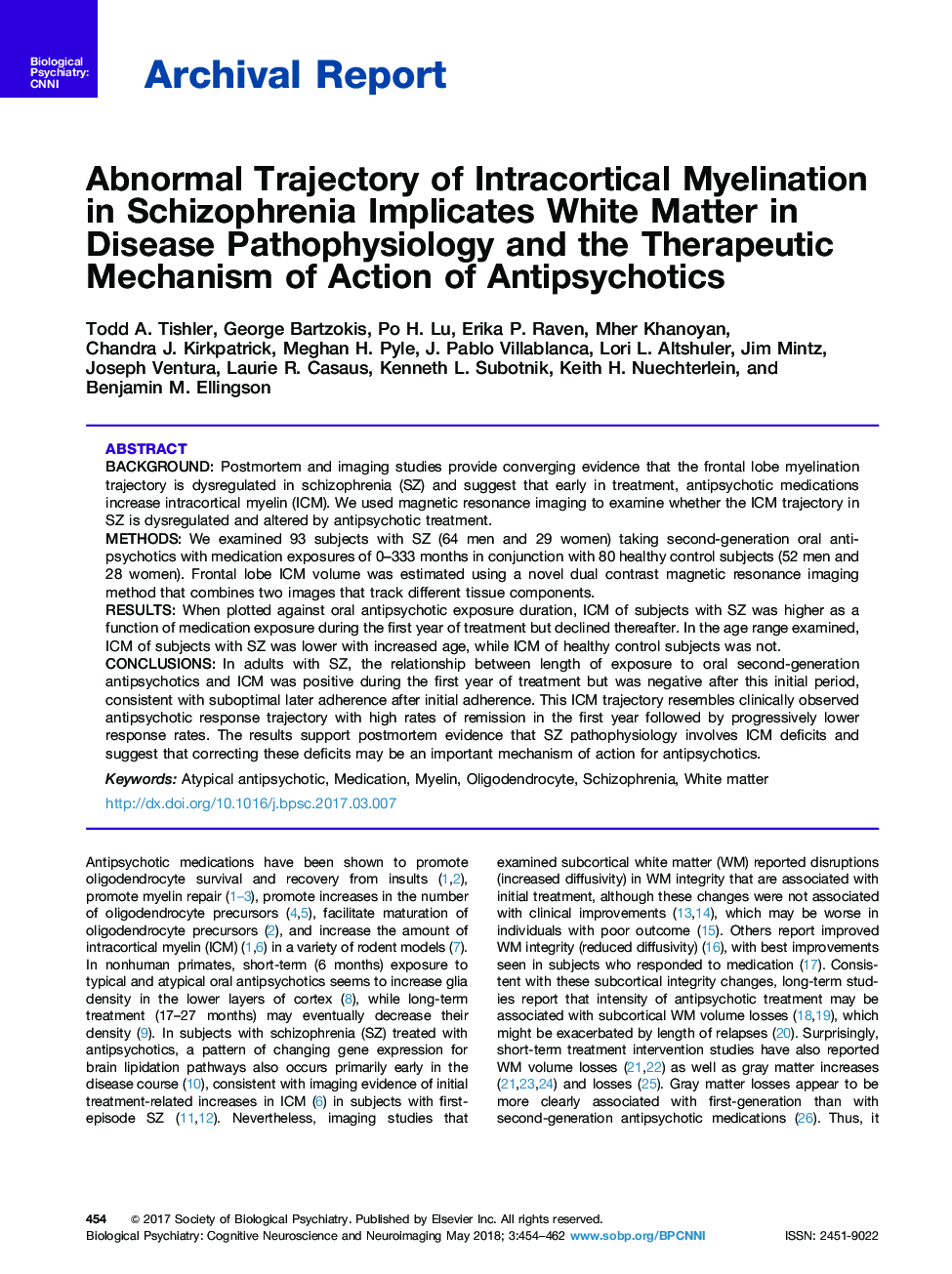| Article ID | Journal | Published Year | Pages | File Type |
|---|---|---|---|---|
| 8814501 | Biological Psychiatry: Cognitive Neuroscience and Neuroimaging | 2018 | 9 Pages |
Abstract
In adults with SZ, the relationship between length of exposure to oral second-generation antipsychotics and ICM was positive during the first year of treatment but was negative after this initial period, consistent with suboptimal later adherence after initial adherence. This ICM trajectory resembles clinically observed antipsychotic response trajectory with high rates of remission in the first year followed by progressively lower response rates. The results support postmortem evidence that SZ pathophysiology involves ICM deficits and suggest that correcting these deficits may be an important mechanism of action for antipsychotics.
Related Topics
Life Sciences
Neuroscience
Biological Psychiatry
Authors
Todd A. Tishler, George Bartzokis, Po H. Lu, Erika P. Raven, Mher Khanoyan, Chandra J. Kirkpatrick, Meghan H. Pyle, J. Pablo Villablanca, Lori L. Altshuler, Jim Mintz, Joseph Ventura, Laurie R. Casaus, Kenneth L. Subotnik, Keith H. Nuechterlein,
